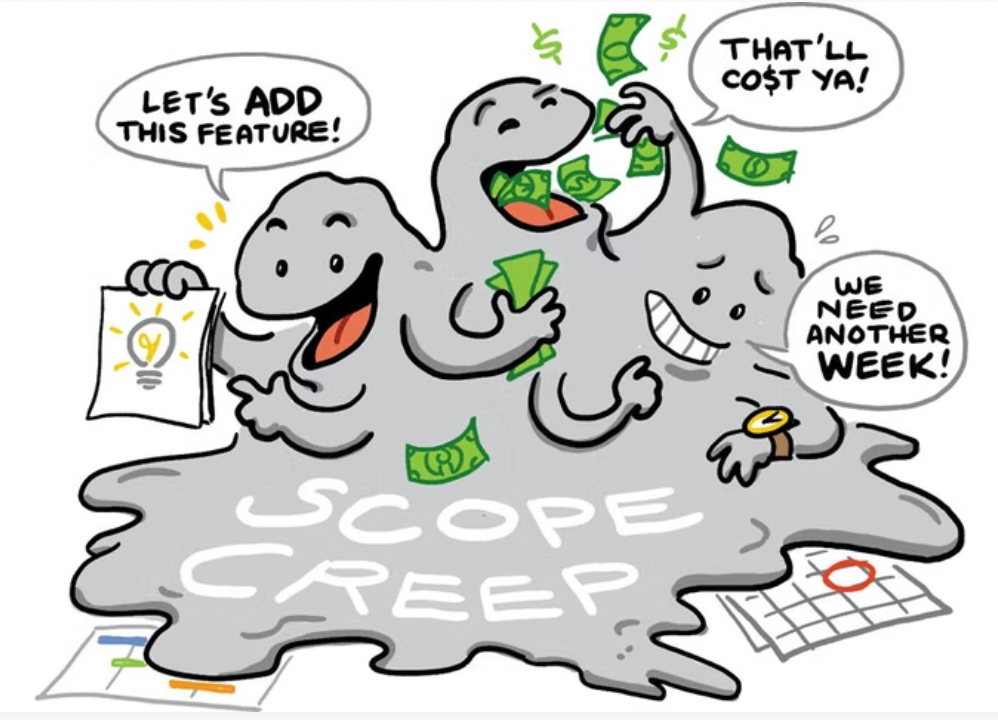Another tip from guest author and skilled evaluator, Kavita Mittapalli, PhD, of MNA Associates, Inc. Read Kavita’s previous guest EvalTuesdayTip.
Over the past few weeks we’ve shared tips on how to avoid scope creep in evaluations – such as using the evaluation management diamond, and including inception reports or evaluability assessments in your evaluation’s scope of work. But sometimes scope creep is impossible to avoid, no matter how hard you try. In her guest tip, Kavita Mittapalli shares some hard truths about scope creep and how she has dealt with it in the past.
Can we take a minute or two to talk about scope creep?

Source: How to Avoid and Manage Scope Creep…The Deadline Killer!
Scope creep – when a project begins to expand outside of its initial, agreed-upon parameters after the project begins – is a common issue in project management across the consulting world. But I would like to narrow this discussion down to our work in program evaluation.
We often work on fixed, tight budgets and timelines with a few set deliverables. We do our best to scope out the work and plan accordingly before we begin. However, scope creep can happen at any point during an evaluation’s life span, often when we’re not expecting it. Even experienced evaluators can end up getting caught in the web.
Scope creep inevitably leads to anger and anxiety among the team members, unpaid billable hours, and the lurking question: Is our work going to satisfy the client at the end of the project, or will there be even more scope creep?
In my experience, here a few common reasons why scope creep happens in program evaluation:
Issues on the client side:
1. Absence of a clear, mutually agreed-upon scope of work (or no formal scope of work at all) for the evaluation.
2. Absence of clearly articulated program goals and objectives and/or a program and evaluation logic model.
3. Failure to collaborate with the evaluator at the time of program planning, not developing a logic model, and/or not agreeing to an evaluation plan (with estimated hours, timelines, and deliverables).
4. Unrealistic expectations of an evaluation in general, or a lack of understanding of how evaluation works (budgeting, labor, time, etc.).
5. Lack of open communication with the evaluator on project changes, requirements, and hence, evaluation needs/expectations.
6. Not involving pertinent stakeholders in the program design and evaluation process; irregular/late feedback to the evaluator.
7. Just being a creep. Just because!
Issues on the evaluator side:
1. Inability or hesitance to push back (not being able to say no or negotiate with the client) for the fear of losing a contract or spoiling a relationship.
2. Not taking the time to fully understand the program’s goals and objectives and design the scope of work accordingly.
3. Poor/inadequate budgeting (to gain points to win a contract).
4. Poor/irregular communication with the client. (If you don’t ask, you won’t know.)
5. You are a glutton for punishment!
Mistakes happen, but it’s important to remember that there is some give-and-take in our work. On a few occasions I have made adjustments to an evaluation scope of work after a project begins, when I realized that a new data collection source – which I hadn’t thought of earlier – would likely provide deeper insights into the program. I’ve also had clients who have agreed that they missed a few details in the original scope of work, and willingly re-negotiated the evaluation budget after a project is already in progress.
So, when you sense impending scope creep in your project: Pause, then communicate with your team and the client immediately to think and talk it through. A majority of the time, clients understand how evaluation really works and will be amenable to re-negotiating the hours on a contract to meet all the deadlines and deliverables.
Good luck!


